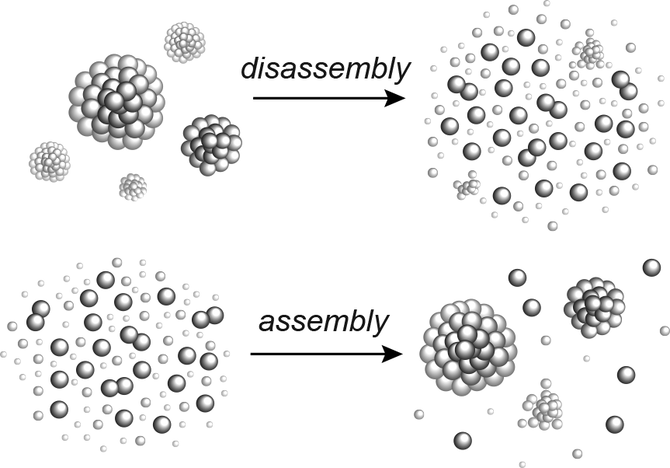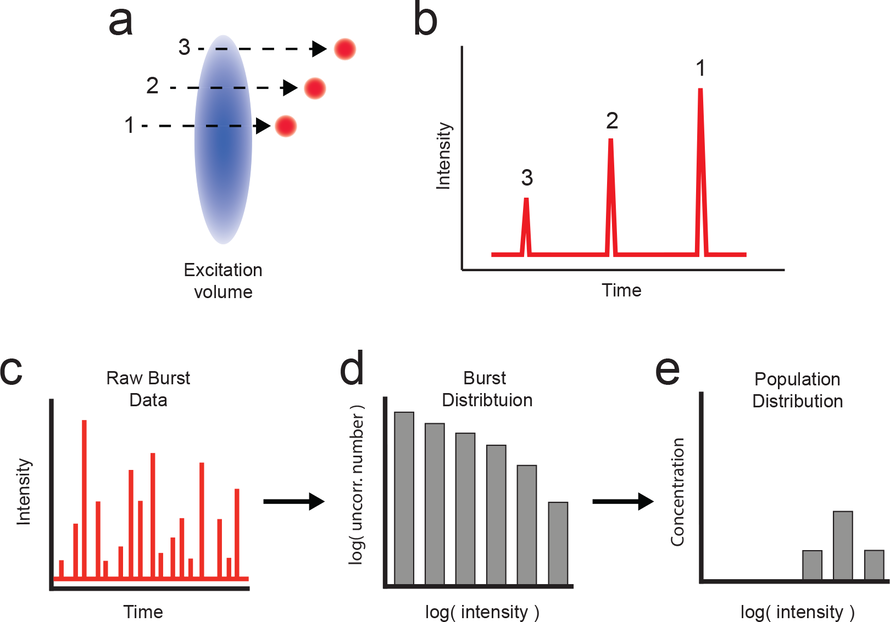The Rye Laboratory
Department of Biochemistry and Biophysics
Development of single particle analysis methods
The challenge of studying biological nanoparticles.
The formation and disassembly of macromolecular particles are ubiquitous and essential features of all living organisms.

Many diseases are also associated with biologically active nanoparticles, like toxic protein aggregates in protein misfolding diseases and the growth of infectious viral particles. At the same time, the heterogeneous and dynamic nature of these nanoparticles can make them exceedingly challenging to study.
A single particle solution – Burst Analysis Spectroscopy (BAS).
To tackle this problem, we are developing new techniques, like burst analysis spectroscopy (BAS). Developed in collaboraiton with Dr. Jason Puchalla in the Physics Department at Princeton University, a BAS measurement employs the advective flow of fluorescent particles through the excitation volume of a confocal microsocpe at a rate faster than diffusion.

The resulting photon bursts are recorded with a highly sensitive detector element. With sufficiently accurate knowledge of the microsocpe system optical response, it is possible to reconstruct the underlying particle size and concentraiton distributions with no assumptions about the shape of these distributions. See Puchalla, J. et al.(2008), PNAS, 105: 14400.
Multi-color Burst Analysis Spectroscopy (MC-BAS).
If more than one component of a nanoparticle system is fluorescently labeled, it is possible to measure both the size and relative stoichiometry distributions of a complex nanoparticle system using multiple lasers and detection channels.

We refer to this approach as multi-color BAS. See Shoup et al. (2021) Biophys J., 120: 2192